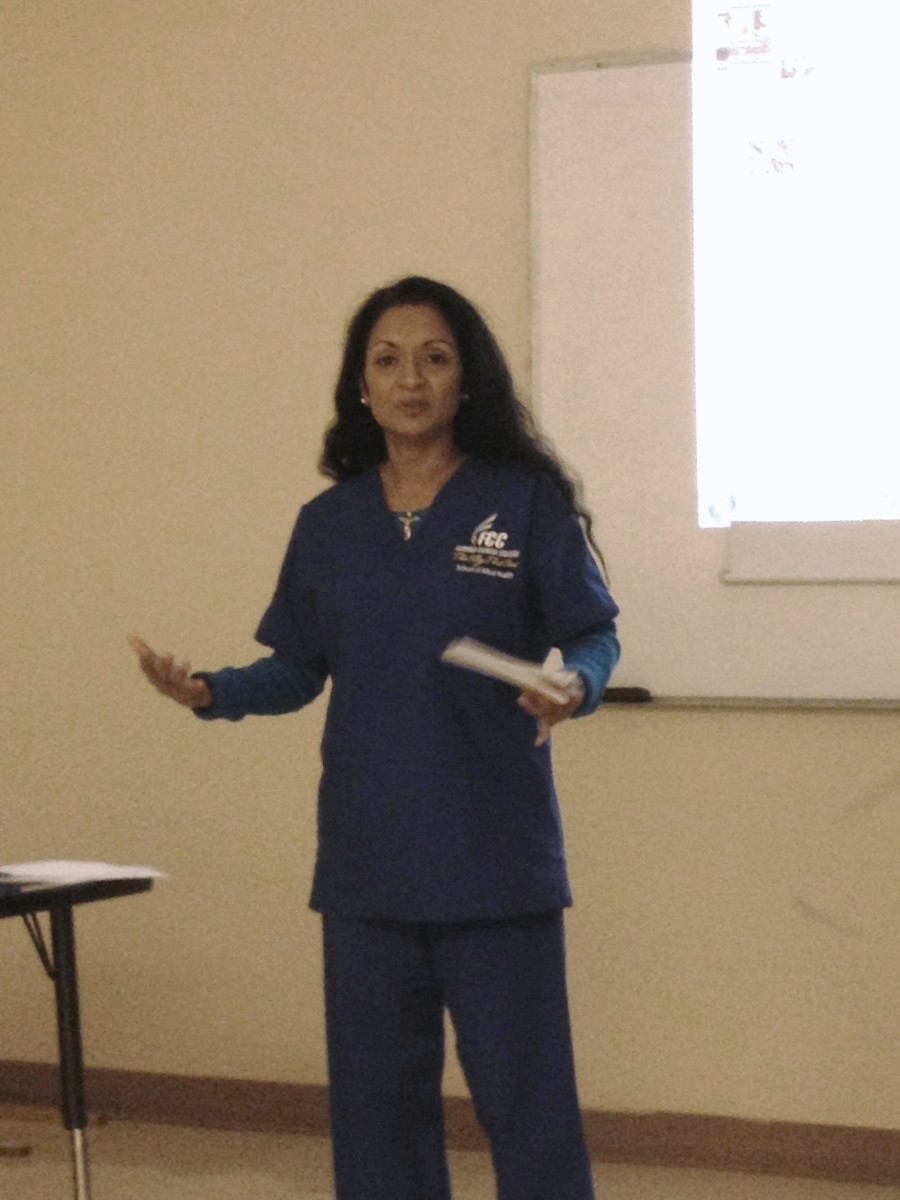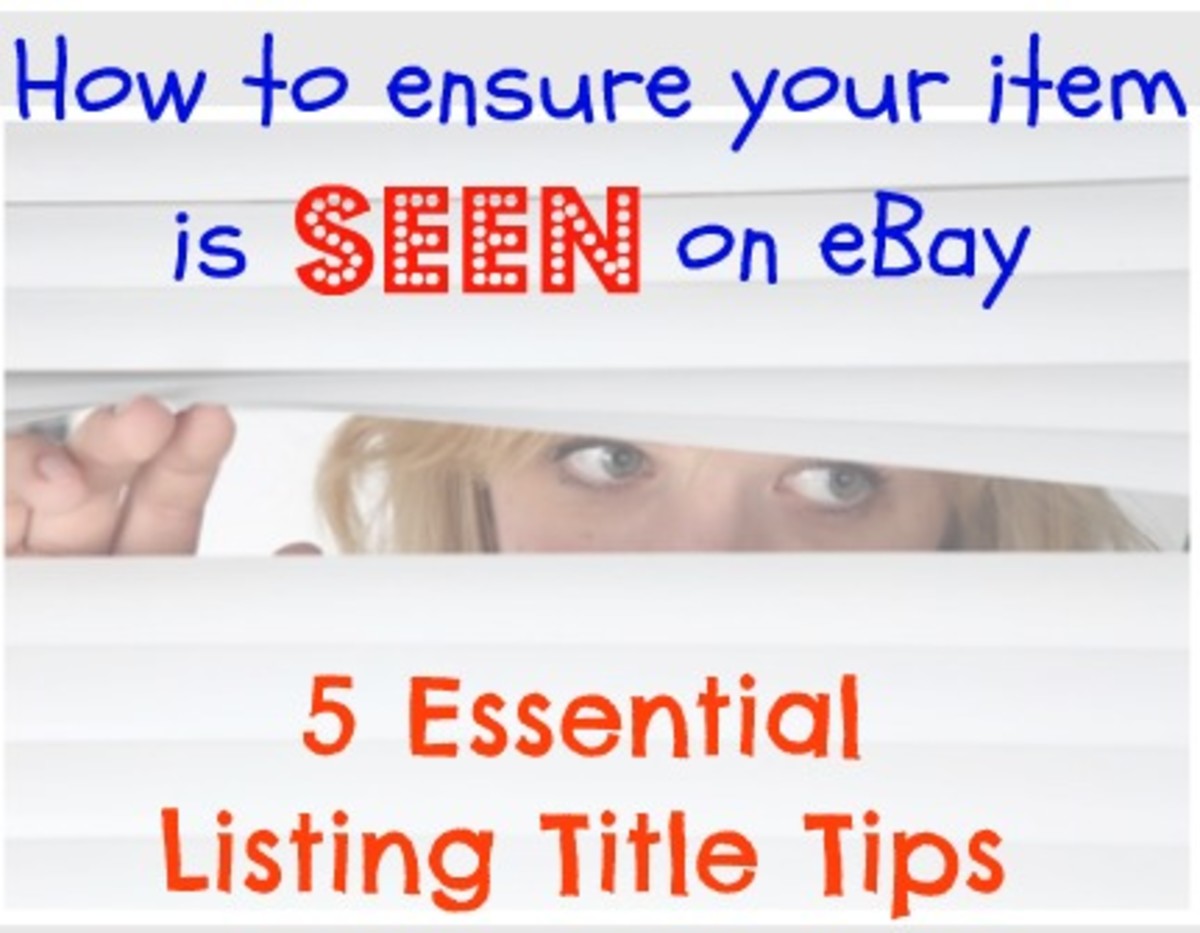Make More Money Writing Online: Writing Persuasively

In "Make More Money Writing Online: How To Write Persuasively," I made a basic statement about writing persuasive copy:
Good writing does not necessarily move people. People move people.
In this article, I want to start by telling you a story that will explain why persuasive copy works to move people. I know a painter of fine art who has had some moderate success in selling his paintings around the country. When he creates a painting, he pours himself into the creative process completely. Most all of his paintings are a wonder to behold but only a fraction of these paintings actually sell. He told me a story once about what happens when a painting sells.
A few years back, my friend was painting "plein-air" around a mountain stream. The subject was a large boulder, about the size of small bus. It looked out of place because there were no other rocks around that came anywhere near the size of this boulder. He liked the way the morning light danced on the surface of the granite so he painted it. The next day, he took that rather unremarkable painting (his words) into a nearby gallery to sell it. Hundreds of people saw the painting (pictured above) but to most people it was just a pretty painting of some unknown boulder.
One older couple saw this painting and had to have it no matter the cost - they didn't even ask about the price. It seems the boulder depicted in the painting was a favorite spot for their children to play many years ago. Now grown, one of their children was about to get married and they thought this painting would make the perfect wedding present. The painting meant little to anyone until it was seen by the right audience - people who were willing to pay anything to get it because they were moved by it.
This is my point about persuasive writing: It doesn't matter so much that the writing is good, what matters is that the message is seen by the right audience and it moves them to take some sort of action.
With that in mind, let's move on to discuss more about writing persuasively. In the other article (see link above), we learned about the importance of originality, benefits/features together and how to build a solid case for the reader. Let's move on to four more tips to help you write more persuasively.
.
Write a Persuasive "Call to Action"
The call to action is the most important part of persuasive writing. This vital information tells the reader what you want them to do with the information you have just provided. In my experience, there must be a very subtle sense of urgency in these words. The call to action must be written carefully. There are no hard and fast rules on how to write an effective call to action but there are some tips I have found over the years to be very helpful.
_______________________________________________________________
Before we get to those tips, let me just make a suggestion for further research on this topic. Get a copy of David Ogilvy's book titled, "Ogilvy on Advertising" and read it several times.
The man was a true master of writing persuasive copy (his writing success bought him a castle in France). Click on Amazon.com link above for the best price on this essential book for persuasive writers…
_________________________________________________________________
5 Tips for Writing an Effective Call to Action
The call to action is typically at the end and is the heart of persuasive writing or copy. In a few carefully selected words, you must persuade the reader to do something, to take the next step, to buy your product, etc. Everything else you have written to this point must now seamlessly lead into the call to action. At this point, the reader is expecting your direction. Here are some things I consider when I write persuasive copy:
Show Them the Way. Always use words to show rather than tell your reader what you want them to do next - and do it in the simplest, most straightforward way possible. For example:
- click on this button to purchase now
- Call 800-555-1234 and talk to a representative now
- Don't wait, call 800-555-1234 today to get more information
- Get involved today
If a reader wonders what to do next, has to work to find a link or look up a phone number, they will likely not make the effort to get in touch with you, ask for more information or buy your product.
Get In, Get Out. Readers have a short attention span in this age of information overload. There is just too much for them to get through. If you've held their attention this far in your writing, make your call to action short and to the point.
Use phrases that are memorable to get your message into their head. An excellent example of this is "Geico could save you 15% or more on car insurance." These 10 words tell customers to call and get the benefit of savings in just a few seconds.
Use Action Words First. Verbs like call, order, act, read, click, etc. These call-to-action verbs should be hard-hitting, direct and leave nothing to the reader's imagination. Tell them confidently what to do next and how that action will benefit them.
Use Stats to Create Trust. Remember, people aren't moved by copy, they're moved by people - especially people they like and trust. Statistics used in combination with good, friendly, confident lead in copy give readers a reason to trust what you say is true. Make them feel like they're missing something of value if they don't take action now. Here are some examples:
- over 1 billion served (McDonald's)
- 90% of our current customers have cut costs by half
- More then 500 people have already discovered the difference
Just a quick note here - never make up statistics, rather, base all claims in truth. There are already enough hucksters out there.
Use Simple Language. Most writers make on critical error when writing persuasive copy - they fail to use simple language and easily understandable terms. Take a look at any software manual and you'll see what I'm talking about. It's like reading a foreign language.
Readers understand simple terms. they don't want to use a dictionary when reading copy. Most folks read on an eighth grade level so keep it simple.
.
Develop Your Writer's Voice
Stop trying to write copy and start speaking copy. Write in a conversational style, like you're talking with someone. Imagine you're having a pleasant conversation with someone you care about. What do you say to establish a personal connection with this other person? What do you tell them in order to gain their trust?
You wouldn't use a whole bunch of words that aren't pertinent to the conversation. You wouldn't use hyperbole, or BS - rather, if you want to be persuasive, you would use the truth. If you puffed up your language or tried to add unnecessary hype, the person to whom you are speaking would tend to think you have ulterior motives. You would use direct, straight talk that speaks to their needs because that's what you would want to hear - especially if the information is important.
This is not going to be easy because you probably already write in a certain style You're going to have to train yourself to write conversationally - to write like you would talk. So how do you learn to write this way? Simple - stop trying to write copy. Instead, talk about something, tell about it.
Here's an exercise to help you learn to write conversationally. Get a recording device, some item about which you are passionate and find a trusted friend. Let's use a favorite book as an example. Find a comfortable spot to sit and start telling this friend about your book. Show them why it's important, how it will change them, how it changed you and why they should get a copy.
(Note: Don't record yourself talking to nobody, you''ll speak very differently and be totally self-conscious about what you're saying. When you're with someone else, you focus on the message and less on how you're speaking.)
.
The Power of an Emotional Appeal
Without emotional appeal, you are not likely to reach many readers and get them to take some sort of action. Be careful because it is easy to be overly manipulative wen using an emotional appeal. Used properly, an appeal to emotion can be an effective means to persuade readers.
Take a look at the video to get an idea of how to use emotional appeal in your writing. Lincoln's Gettysburg address, Kennedy's Inaugural address or the "I Have a Dream" speech by Martin Luther King, Jr. are all goos examples of using emotional appeal.
Read Thomas Paine's "The Crisis," Number 1 published in 1776. This strongly emotional and persuasive appeal convinced most colonists that the Revolutionary War was the only path to freedom. This is at the heart of what I have been talking about in this series of articles - simple words, used correctly have the power to move people. Thomas Paine's words had the power to reach people and move a fledgling nation to war.
Here is the best story I've heard to explain the difference between logical appeal and emotional appeal. In a particular state senate house, representatives of both parties were trying to get a welfare bill passed. One side used a logical approach and claimed the bill was unnecessary through the use of very convincing facts, charts and figures. The other side wanted the bill to pass and used an emotional appeal in an attempt to get more votes. Their emotional story went something like this:
A young 5 year old boy sits in his home with nothing to eat, his stomach growling as he anticipates his next meal. Only that meal will not come on this day, or for many other days in this young boys life. You see, his mother cannot afford to buy food for her family. On this night, one young boy decides he will not go to bed hungry again. He quietly steals into a neighbors yard and stealthily selects the last few remaining morsels of food from a bowl belonging to the neighbor's dog.
The story told was indeed true. One senator knew of a family in which the children would steal dog food from a neighbors yard because they were so hungry. The thought of a child doing this provided enough emotional appeal to persuade some senators to change their vote. That welfare bill won enough support and it passed. My point is this - write persuasively using emotional appeal based on true facts and your readers will be more likely to respond to your call to action.
.
The Importance of Editing
One of the last steps that I take when writing is editing. Sure, I look for all the usual things when editing my writing. Things like removing needless or excessive words. I would replace "the reason for this is…" with a simpler "because." I look for sentences or sections that could benefit from an emphatic or forceful ending. I would use more powerful nouns and verbs rather than just adding in a few adjectives or adverbs. I also look for words that evoke emotion like anger, passion, frustration, etc.
Let the article sit for a day or two and then take another run at editing. This allows your mind to get off the details and see the bigger picture regarding a particular story or piece of copy. Reconstruct your copy if necessary. Look for things that might work better in another part of your copy. Maybe some areas need more details. Important words belong at the end of sentences, important sentences belong at the end of paragraphs.
I love to kill commas. In my way of writing, there are basically three places to use commas: to separate a list of items, to set off parenthetic expressions and maybe after the word "but," although I typically do not use them there. All other commas must die. In most cases a comma should be replaced with a colon, semicolon, parentheses or the ever-popular em-dash (of which I probably use too many).
Perhaps the best advice I have ever heard about editing is to read the copy one last time - aloud. That's right, read it aloud and listen to how it sounds. Take it a step deeper and record the recitation then listen to the recorded version. You will be amazed at how different your writing sounds when it is read aloud. Use this method and I guarantee that some of the things you missed when editing in your head will stand out as plain as day when read aloud.
For the most part, I regard editing rules as something to be broken - especially when I'm trying to achieve a certain effect. Before you break those rules, take time to learn them first.
I was trained as a copywriter and that means we disregarded all those pesky editing rules and focused on the message. In advertising that was acceptable. With copy editors, not so much. My best advice is do your best to stay within the majority of editing rules while maintaining the essence of what you're trying to say.
Get a copy of "The Elements of Style" by Strunk & White or Zinsser's "On Writing Well" and learn those rules. Most of all, trust your instincts when editing.
.
A Final Word for Persuasive Writers
I like to express myself through several creative outlets of which writing is one of my favorites. If you love to write, you know what I'm talking about. I am not perfect and I don't claim to be the best grammarian or editing expert. I write because I have a heart for writing. I write first and then run that writing through the usual editing filters to make it better, more persuasive. My clients tell me that my work is good by continuing to come back for more. I like writing because it tells me I can offer something of value to others.
No matter where you are in your writer's journey, make time to always better your talents. Polish your craft, be a better writer today than you were yesterday. Push forward, always improving - excelsior! You have something to say and there are people who will want to read your work. Disregard the critics and naysayers. Write. Then write more. - Good luck!
.










